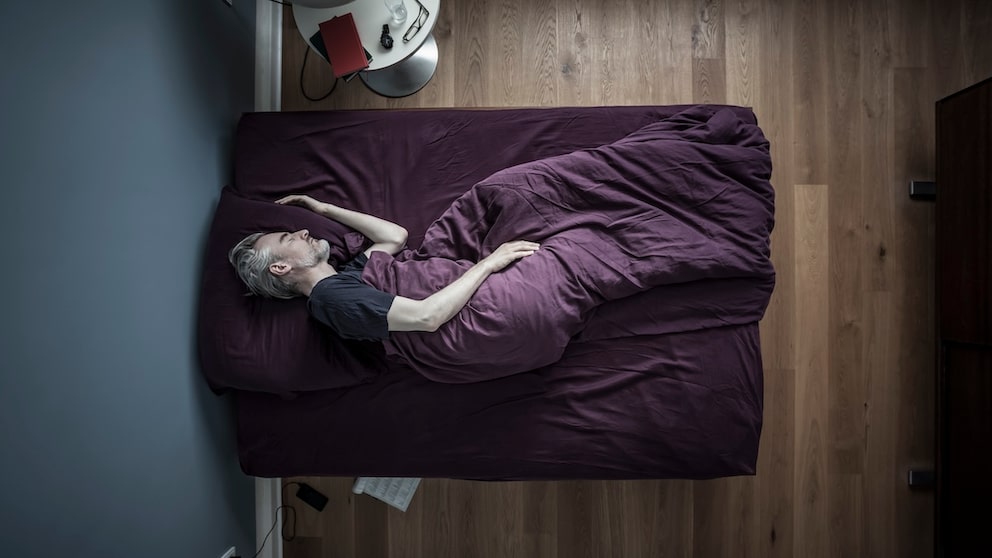March 23, 2025, 2:03 pm | Read time: 4 minutes
Some people prefer to go to bed early and get up earlier in the morning, while so-called night owls are active at night and wake up later the next day. These routines, which are linked to people’s chronotypes, have an impact on various areas of our health. A study has now shown which of these types is more at risk of developing depression.
Sleep disorders are considered one of the many symptoms of depression. Conversely, it is assumed that long waking times at night — in addition to other factors — can increase the risk of developing the mental disorder. In this context, the results of a new study provide valuable information on the influence of sleep routines.1 Or, more precisely, the effects of belonging to the chronotype of the night owl.
Overview
First: What Does Chronotype Mean?
According to the classic model, there are three main chronotypes: the morning type, also known as the lark, which gets up early and is particularly active in the morning; the evening type, also known as the night owl, which gets up late and is mainly productive at night; and the neutral type, which shows no pronounced tendencies for morning or evening.
Which chronotype you belong to is largely genetically determined. It can change over the course of a lifetime due to various factors. However, forcing this on yourself can have negative consequences, as a sleep physician explains to FITBOOK. For example, living against your internal clock not only affects sleep quality and performance. It can also weaken the immune system and increase the risk of various health problems.
One Sleep Pattern Increases Depression Risk, According to Study
FITBOOK reported on a study that showed that night owls have a higher risk of chronic diseases. 2 Night-time activity is often associated with poorer fat burning and corresponding health problems, among other things. As the new study shows, the chronotype also favors the development of depression.
The study looked specifically at the question of how belonging to the lark or night owl chronotype affects the occurrence of depressive symptoms. The research team, led by neuroscientist Simon Evans, used information from 546 students at the University of Surrey. The data was collected via online questionnaires and ran from April 16, 2021 to March 30, 2023.
Details of the Study on Sleep and Depression
The chronotype of the 17- to 28-year-old participants was determined using a shortened version of the recognized Morningness-Eveningness Questionnaire (rMEQ).2 This consisted of questions on the sleep-wake cycle and subjective assessment of energy levels at different times of the day. The researchers used a tried-and-tested self-assessment questionnaire to record sleep habits and quality. This comprised seven relevant components, such as sleep duration and sleep disturbances.
The participants’ alcohol consumption was recorded in units of alcohol per week. One unit corresponded to a small glass of wine or half a pint (about 284 milliliters) of beer. Rumination, i.e., dwelling on worries and negative thoughts, was also measured. For this purpose, the researchers used a special questionnaire to differentiate between brooding and reflecting. In order to measure depression, an official 14-item questionnaire was used to assess anxiety and depression.
Special Focus on Mindfulness
Another focus was the topic of mindfulness. According to the study, the term comes from Buddhism. It can be defined as the conscious, non-judgmental perception of present experiences. In recent years, the importance of mindfulness as a protective factor for mental health has become increasingly clear. This aspect was investigated using a questionnaire with 24 questions.
The researchers used a mediation model, i.e., a statistical program, to understand how the different chronotypes and other data affect the risk of depression. They took into account accompanying factors such as the age and gender of the study participants.
Results and Significance
The analysis showed that the indications of depression were significantly more pronounced in the night owls. The researchers found that they had poorer sleep quality, higher alcohol consumption, and more repetitive thoughts (brooding). They also scored worse in the areas surveyed on the topic of mindfulness.
Mindfulness, sleep quality, and alcohol consumption — these three factors were decisive for the development of depression in night owls, as the researchers emphasized on the basis of their mediation analysis. The results, therefore, provide valuable information on possible measures to reduce the risk of depression, particularly in young adults. Among other things, the study authors recommend strategies to promote mindfulness, guided meditation, measures to improve sleep quality, and a reduction in alcohol consumption as useful interventions against the mental disorder.

Cross-Sectional Analysis A Common Condition Can Double the Risk of Erectile Dysfunction

Study with Over-70s Certain Sleep Pattern Apparently an Early Sign of Alzheimer’s Disease

Analysis Result Surprises The Link Between a Meat-Free Diet and Depression
Limitations of the Study
It should be borne in mind that the results of the study are based exclusively on the self-reports of the study participants. The reliability of the results is, therefore, limited. In addition, the subjects had an average age of 19.77 years, which is why transferability to older adults with a different quality of life is only possible to a limited extent.

